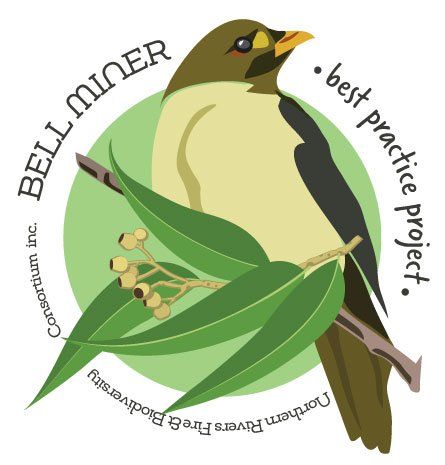When its NOT BMAD?
Other forms of dieback
Lets talk about other forms of eucalypt dieback..
So, What is dieback exactly?
Dieback is a syndrome of progressive decline in tree health over months or years, which can lead to premature tree. Eucalypt dieback occurs in response to stress, and all forms of eucalypt dieback share the same specific symptoms of progressive death from the tips of branches into the canopy followed by crown thinning, epicormic growth and eventual tree death if there is no recovery.
What causes dieback?
Eucalypt dieback is a complex disease and can have many causes, making diagnosis difficult. Dieback can be caused by several factors including insects, pathogens, changes in soil or groundwater properties and climatic or extreme weather events. Additionally, these causes may interact with each other to exacerbate dieback in ways that are worse than each stressor operating independently.
Eucalypt dieback events can be simple, two-factor or complex. Simple dieback is dieback in response to a single stressor, such as drought or frost resulting in death of tree tissue in a relatively simple response. Two-factor dieback involves either two stressors interacting synergistically to exacerbate tree dieback, or a single factor pushing eucalypt health to reach critical thresholds, such as an interaction between drought and fire.
Complex dieback involves more than two factors, which can involve positive feedback loops that perpetuate dieback or have a sequence of stressors that vary over time, such as bell miner associated dieback (BMAD). Complex forms of dieback are more difficult to diagnose and manage than simple and two-factor dieback events. Dieback can occur in both disturbed and intact plant communities, however complex dieback is more common in disturbed and fragmented eucalypt communities as there are multiple dysfunctional ecosystem processes.
Dieback factors
Fire
Fire directly damages eucalypts, causing dieback. Fires kill shoots and leaves, girdling stems and branches and damaging roots. The level of fire impact fire ranges from from minor leaf scorching to tree death and depends on species traits, canopy height, time of year and tree growth stage.
The impact of fire on eucalypts depends on several factors including species traits, canopy height, fire intensity, fire frequency, time of year and growth stage. Resprouting eucalypts are usually able to recover quickly after severe fires by producing epicormic shoots, but their capacity to recover is heavily influenced by fire frequency and severity.
Drought and heatwaves
Drought and heatwaves both produce water stress in eucalypts, inducing dieback. Water stress, caused by a lack of available water or high-water demand means that the tree cannot transport water to its tissues. In response, the tree sheds its leaves and shoots prematurely. In severe cases there can be complete dieback and death.
Particular site characteristics can increase the susceptibility of a stand to drought-induced stress and dieback, including exposed topography, disconnection from groundwater, shallow soils with low water-holding capacity and high.
Waterlogging
Waterlogging can also induce water stress in eucalypts and produce effects of similar severity to drought. Many eucalypts are prone to waterlogging stress as they lack adaptations to cope with prolonged periods of inundation. Waterlogged soils often lack oxygen as air pockets fill with water, causing stress by preventing roots from respiring effectively.
Waterlogged trees can also develop tyloses (small, balloon-like growths) in their tissues which blocks water transport through tissues and causes a ‘physiological drought’. Waterlogging also predisposes trees to insect and pathogen attack, worsening dieback.
Areas with impermeable subsurface soils and in water-gaining areas in valleys are more prone to waterlogging stress.
Insect Attack
Leaf-mining, skeletonizing, chewing and sap-sucking insects have all been implicated in defoliation and dieback. Damage from insects varies between small, scattered areas of dead foliage to severe defoliation events. Dieback doesn’t usually occur after a single severe defoliation event but rather multiple defoliations over a prolonged period are necessary.
Small infestations of insects are normal in healthy vegetation and are needed to maintain populations of insectivorous animals. Insect populations are regulated in multiple ways, including by extreme temperatures, predators (birds, parasitoids) and food resource availability and quality. Changes to one or more of the regulating mechanisms (e.g. absence of predators) can lead to insect outbreaks and resulting dieback.
Epicormic growth produced after defoliation is ‘tastier’ (more nutritious and palatable) and supports higher numbers of insects, triggering further outbreaks and defoliation. Epicormic growth production depletes the tree’s internal starch reserves, causing branch dieback and leading to tree death.
Although insects are related to tree damage, they are usually secondary agents of dieback that appear in response to other changes that predispose trees to their attack (e.g. drought or waterlogging).
Pathogens
Eucalypts are affected by several diseases caused by infection from a range of pathogens that are diverse and widespread. Fungal pathogens are particularly problematic and have been demonstrated to negatively impact native forests, especially when the trees are already stressed.
Fungal infections can result in the death of root, leaf, cambium and other tissues, subsequently leading to decline and dieback.
Considerations for management
Dieback is a complex process that often occurs at a landscape scale. Diagnosing dieback can be difficult, especially when there are multiple stressors involved. When addressing dieback, take a look at what stressors could be impacting the trees and consider them when planning remediation or other management activity. Monitoring programs are incredibly valuable to test the response of the trees to management actions taken and could provide valuable insight into the critical factors affecting your forest.
Northern Rivers Fire & Biodiversity Consortium inc.
This project is supported by North Coast Local Land Services, through funding from the
Australian Government’s National Landcare Program and the NSW Department of Planning, Industry and Environment
through funding from the Saving Our Species Program.
